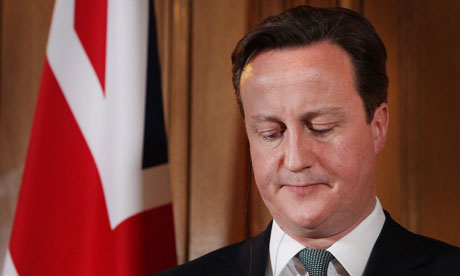Number of Firms: The number of firms in a market refers to the total count of independent businesses competing with each other to sell similar or substitute goods or services. The number of firms influences the level of competition and market concentration, which, in turn, affects market structure. Market structures can range from a monopoly (one firm) to perfect competition (many firms).
Example: A market with only one telecommunications company providing phone services would be a monopoly. In contrast, a market with multiple telecommunications companies competing with each other would reflect a more competitive market structure, such as oligopoly or perfect competition.
Contestability (Ability to Enter and Exit Markets Freely):Contestability refers to the ease with which new firms can enter a market and compete with existing firms, as well as the freedom for existing firms to exit the market without significant barriers or impediments. The degree of contestability affects the potential for new entry and the level of competition within a market.
Example: In a market with low barriers to entry and exit, such as the smartphone app development industry, new firms can easily enter the market and offer their apps. If these firms can compete effectively with existing app developers, it indicates high contestability and a more competitive market structure.
The Relationship:The number of firms and contestability are interrelated and jointly determine the structure of a market. When there are a large number of firms and low barriers to entry and exit, it promotes competition and leads to more competitive market structures, such as perfect competition or monopolistic competition.
In contrast, when there are a small number of firms and high barriers to entry and exit, it restricts competition and can result in more concentrated market structures, such as oligopoly or monopoly.
Example: Consider the market for coffee shops in a particular city. If there are numerous coffee shops, and new coffee shops can enter the market easily and compete with existing ones, it indicates a highly contestable market with many firms. This scenario would align with a competitive market structure, such as perfect competition or monopolistic competition.
However, if there are only a few dominant coffee shop chains and significant barriers to entry, such as high startup costs or exclusive lease agreements, the market would have low contestability. This would result in a less competitive market structure, such as an oligopoly or even a monopoly if one chain has a dominant market position.
In summary, the structure of a market depends on the number of firms operating within it and their ability to enter and exit the market freely. The presence of many firms and high contestability leads to more competitive market structures, while fewer firms and low contestability can result in concentrated market structures with less competition.
Key Terms:
Barriers to Entry: Barriers to entry are obstacles or restrictions that prevent new firms from entering a market and competing with existing firms. These barriers can be both structural and behavioral in nature.
Structural Barriers to Entry: Structural barriers to entry refer to inherent characteristics of a market that make it difficult or costly for new firms to enter and establish themselves. These barriers are typically long-term and relate to the market's fundamental structure.
Behavioral Barriers to Entry: Behavioral barriers to entry arise from the actions of existing firms in a market to discourage or limit new entrants. These barriers are often strategic and can be influenced by the actions of dominant players in the market.
Examples and Distinction:
- Structural Barriers to Entry:
a. Economies of Scale: When existing firms in a market benefit from economies of scale, new entrants may find it challenging to match the cost efficiency of established firms. As production increases, the average cost per unit decreases, providing a competitive advantage to larger companies. This discourages new firms from entering and competing with economies of scale.
Example: In the automobile manufacturing industry, large carmakers enjoy economies of scale due to their established production facilities, distribution networks, and purchasing power. New entrants face difficulty achieving similar cost efficiencies, making it a structural barrier to entry.
b. High Capital Requirements: Some markets require substantial upfront investments in machinery, technology, or infrastructure to compete effectively. High capital requirements act as a deterrent for new entrants, limiting their ability to enter the market.
Example: The airline industry demands significant capital investment to purchase aircraft and establish routes. This high capital requirement makes it difficult for new airlines to enter the market and compete with established carriers.
c. Access to Distribution Channels: In certain markets, established firms may control critical distribution channels, making it difficult for new entrants to reach customers effectively. Without access to established distribution networks, new firms may struggle to gain market share.
Example: In the retail industry, large supermarket chains control established distribution networks, making it challenging for new grocery stores to enter the market and compete for shelf space and customer visibility.
- Behavioral Barriers to Entry:
a. Predatory Pricing: Dominant firms may engage in predatory pricing, intentionally setting prices below cost to drive out new entrants. Once competitors are forced out, the dominant firm can then raise prices and regain its market power.
Example: A large software company offering its products at unprofitably low prices to deter new software startups from entering the market is an example of predatory pricing.
b. Brand Loyalty: Established firms often build strong brand loyalty and customer trust over time. This creates a barrier for new entrants as customers may be hesitant to switch to an unknown brand.
Example: Tech-savvy consumers' strong brand loyalty to smartphones may deter new smartphone manufacturers from entering the market, even if they offer innovative features.
c. Exclusive Contracts: Existing firms may enter into exclusive contracts with suppliers or distributors, preventing new entrants from accessing essential resources or distribution channels.
Example: A dominant beverage company entering into exclusive contracts with popular restaurants and convenience stores may limit the ability of new beverage companies to access these sales channels.
In summary, barriers to entry can be both structural and behavioral. Structural barriers stem from inherent market characteristics, such as economies of scale and high capital requirements. Behavioral barriers, on the other hand, result from strategic actions taken by existing firms to discourage or limit new entrants, such as predatory pricing and brand loyalty. Understanding these distinctions helps identify the challenges new firms face in entering competitive markets.
Regulators play a crucial role in influencing the degree of contestability in a market by implementing policies and regulations that either promote or hinder competition. Here are several ways regulators can affect contestability in a market, along with examples:
Barriers to Entry and Exit:
- Regulators can influence the ease with which new firms can enter a market by setting entry requirements, licensing, or imposing restrictions on potential entrants.
- They can also impact the ability of firms to exit the market by imposing exit fees, liquidation costs, or other legal barriers.
Example: In the telecommunications industry, regulators can grant or deny licenses to new companies seeking to provide services. If regulators make it easy for new firms to obtain licenses and enter the market, it encourages greater contestability and competition among telecommunications providers.
Anti-Competitive Practices:
- Regulators can enforce antitrust laws to prevent anti-competitive practices, such as price-fixing, collusion, or predatory pricing, which can restrict competition and limit contestability in a market.
Example: In the airline industry, regulators can investigate and take action against airlines engaging in collusion to fix ticket prices. By curbing such anti-competitive practices, regulators ensure a more competitive market that benefits consumers with lower fares and increased choices.
Merger and Acquisition Approval:
- Regulators can assess and approve or reject mergers and acquisitions based on their potential impact on competition and contestability in the market.
- They may require divestitures or impose conditions to ensure that the merged entity does not gain undue market power that could harm competition.
Example: When two pharmaceutical companies propose a merger, regulators may scrutinize the deal to assess its potential effects on competition in the pharmaceutical industry. If the merger is deemed to reduce competition and contestability, regulators may impose conditions or reject the merger to maintain a competitive market.
Price Regulation:
- Regulators can set price caps or price floors to prevent firms from exploiting their market power and to promote a competitive environment.
- Price regulation can prevent monopolistic practices and ensure that consumers have access to reasonably priced goods and services.
Example: In the electricity market, regulators can impose price ceilings to limit the prices charged by power generation companies. This prevents firms from exploiting their dominant position and promotes contestability in the electricity market, allowing new entrants to compete.
Access to Essential Facilities:
- Regulators can ensure that essential facilities or infrastructure, such as transportation networks or communication networks, are accessible to all firms on fair and non-discriminatory terms.
- This prevents the dominant control of essential facilities by a single firm, allowing competitors to enter the market and increase contestability.
Example: In the railroad industry, regulators can mandate that rail network operators provide access to their tracks for other freight companies at fair rates. This promotes competition in the freight transportation market and enhances contestability.
In summary, regulators can significantly influence the degree of contestability in a market through various policies, regulations, and enforcement actions. By promoting fair competition, preventing anti-competitive practices, and ensuring access to essential facilities, regulators contribute to creating more competitive and contestable markets that benefit consumers and promote innovation.

